Audi Q3 vs Ford Puma – Which one offers the better deal?
Both models have their strengths – but which one suits you more?
Compare performance, efficiency, price and space directly: Audi Q3 or Ford Puma?
Costs and Efficiency:
Price and efficiency are key factors when choosing a car – and this is often where the real differences emerge.
Ford Puma has a decisively advantage in terms of price – it starts at 24800 £, while the Audi Q3 costs 38200 £. That’s a price difference of around 13457 £.
Fuel consumption also shows a difference: Audi Q3 manages with 1.70 L and is therefore clearly more efficient than the Ford Puma with 5.40 L. The difference is about 3.70 L per 100 km.
As for range, the Ford Puma performs convincingly better – achieving up to 376 km, about 257 km more than the Audi Q3.
Engine and Performance:
Under the bonnet, it becomes clear which model is tuned for sportiness and which one takes the lead when you hit the accelerator.
When it comes to engine power, the Audi Q3 has a evident edge – offering 272 HP compared to 168 HP. That’s roughly 104 HP more horsepower.
In acceleration from 0 to 100 km/h, the Audi Q3 is distinct quicker – completing the sprint in 5.70 s, while the Ford Puma takes 7.40 s. That’s about 1.70 s faster.
In terms of top speed, the Audi Q3 performs slightly better – reaching 240 km/h, while the Ford Puma tops out at 210 km/h. The difference is around 30 km/h.
There’s also a difference in torque: Audi Q3 pulls evident stronger with 400 Nm compared to 290 Nm. That’s about 110 Nm difference.
Space and Everyday Use:
Beyond pure performance, interior space and usability matter most in daily life. This is where you see which car is more practical and versatile.
Both vehicles offer seating for 5 people.
In curb weight, Ford Puma is evident lighter – 1316 kg compared to 1635 kg. The difference is around 319 kg.
In terms of boot space, the Ford Puma offers hardly perceptible more room – 523 L compared to 488 L. That’s a difference of about 35 L.
In maximum load capacity, the Audi Q3 performs hardly perceptible better – up to 1386 L, which is about 103 L more than the Ford Puma.
When it comes to payload, Audi Q3 somewhat takes the win – 535 kg compared to 469 kg. That’s a difference of about 66 kg.
Who wins the race?
The Audi Q3 proves to be is largely superior and therefore becomes our DriveDuel Champion!
Audi Q3 is the better all-rounder in this comparison.
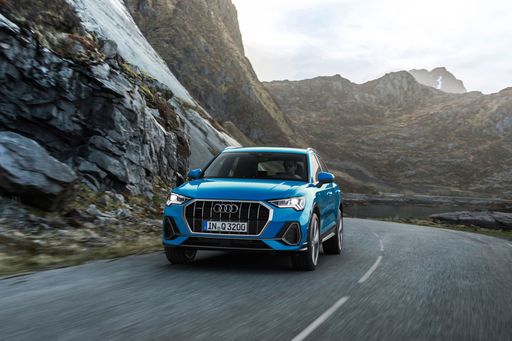
Audi Q3
Audi Q3
The Audi Q3 seamlessly blends practicality with luxury, making it an ideal choice for urban dwellers and adventure seekers alike. With its striking design and sophisticated interior, the Q3 offers a premium driving experience that caters to both comfort and style. As a compact SUV, it effortlessly navigates through city streets while providing ample space for passengers and cargo.
details @ audi-mediacenter.com
@ audi-mediacenter.com
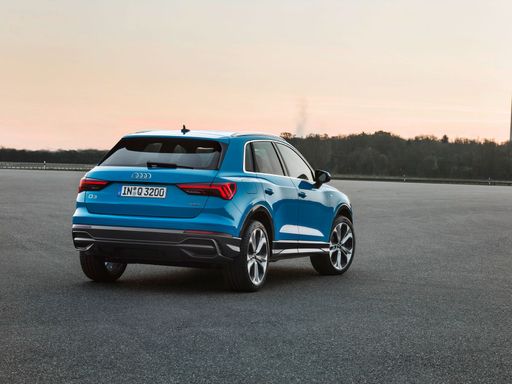 @ audi-mediacenter.com
@ audi-mediacenter.com
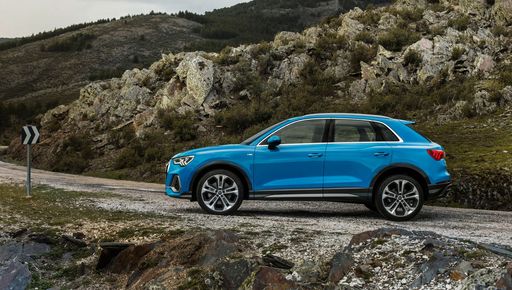 @ audi-mediacenter.com
@ audi-mediacenter.com
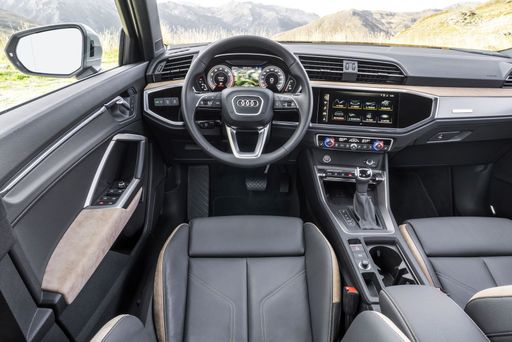 @ audi-mediacenter.com
@ audi-mediacenter.com
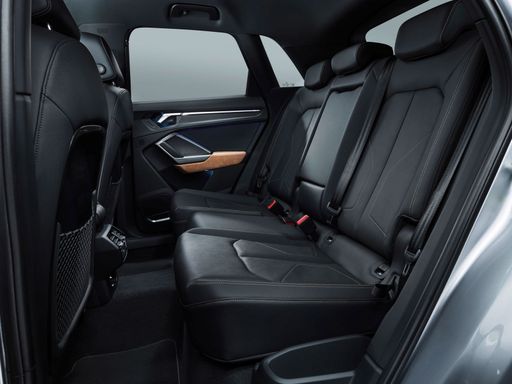 @ audi-mediacenter.com
@ audi-mediacenter.com
Ford Puma
The Ford Puma presents itself as a stylish compact SUV with a distinctive design that combines practicality with a dynamic driving experience. Its sleek lines and sporty aesthetics make it stand out on the road, while the interior offers a comfortable and tech-savvy environment. With an emphasis on efficiency and a smooth drive, the Ford Puma is well-suited for both urban commutes and countryside adventures.
details @ puma.fordpresskits.com
@ puma.fordpresskits.com
 @ puma.fordpresskits.com
@ puma.fordpresskits.com
 @ puma.fordpresskits.com
@ puma.fordpresskits.com
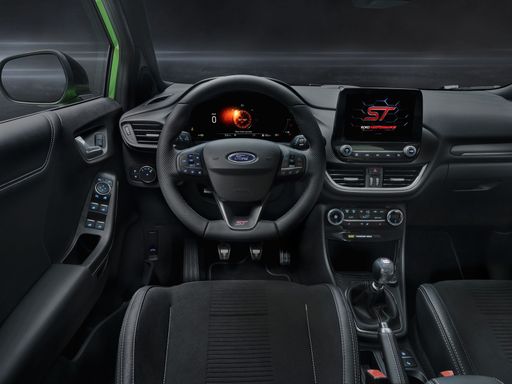 @ puma.fordpresskits.com
@ puma.fordpresskits.com

|

|
|
|
|
Costs and Consumption |
|
|---|---|
|
Price
38200 - 52900 £
|
Price
24800 - 36300 £
|
|
Consumption L/100km
1.7 - 8.6 L
|
Consumption L/100km
5.4 - 5.9 L
|
|
Consumption kWh/100km
-
|
Consumption kWh/100km
13.1 - 13.9 kWh
|
|
Electric Range
118 - 119 km
|
Electric Range
361 - 376 km
|
|
Battery Capacity
19.70 kWh
|
Battery Capacity
43 kWh
|
|
co2
39 - 195 g/km
|
co2
0 - 135 g/km
|
|
Fuel tank capacity
45 - 60 L
|
Fuel tank capacity
42 L
|
Dimensions and Body |
|
|---|---|
|
Body Type
SUV
|
Body Type
SUV
|
|
Seats
5
|
Seats
5
|
|
Doors
5
|
Doors
5
|
|
Curb weight
1635 - 1900 kg
|
Curb weight
1316 - 1563 kg
|
|
Trunk capacity
375 - 488 L
|
Trunk capacity
456 - 523 L
|
|
Length
4531 mm
|
Length
4186 - 4226 mm
|
|
Width
1859 mm
|
Width
1805 mm
|
|
Height
1559 - 1601 mm
|
Height
1550 - 1555 mm
|
|
Max trunk capacity
1196 - 1386 L
|
Max trunk capacity
1216 - 1283 L
|
|
Payload
505 - 535 kg
|
Payload
367 - 469 kg
|
Engine and Performance |
|
|---|---|
|
Engine Type
Petrol MHEV, Petrol, Plugin Hybrid, Diesel
|
Engine Type
Electric, Petrol MHEV
|
|
Transmission
Automatic
|
Transmission
Automatic, Manuel
|
|
Transmission Detail
Dual-Clutch Automatic
|
Transmission Detail
Reduction Gearbox, Manual Gearbox, Dual-Clutch Automatic
|
|
Drive Type
Front-Wheel Drive, All-Wheel Drive
|
Drive Type
Front-Wheel Drive
|
|
Power HP
150 - 272 HP
|
Power HP
125 - 168 HP
|
|
Acceleration 0-100km/h
5.7 - 9.2 s
|
Acceleration 0-100km/h
7.4 - 9.8 s
|
|
Max Speed
208 - 240 km/h
|
Max Speed
160 - 210 km/h
|
|
Torque
250 - 400 Nm
|
Torque
170 - 290 Nm
|
|
Number of Cylinders
4
|
Number of Cylinders
3
|
|
Power kW
110 - 200 kW
|
Power kW
92 - 124 kW
|
|
Engine capacity
1498 - 1984 cm3
|
Engine capacity
999 cm3
|
General |
|
|---|---|
|
Model Year
2025
|
Model Year
2025
|
|
CO2 Efficiency Class
E, G, B
|
CO2 Efficiency Class
A, D
|
|
Brand
Audi
|
Brand
Ford
|
Is the Audi Q3 offered with different drivetrains?
The Audi Q3 is available as Front-Wheel Drive or All-Wheel Drive.
The prices and data displayed are estimates based on German list prices and may vary by country. This information is not legally binding.
